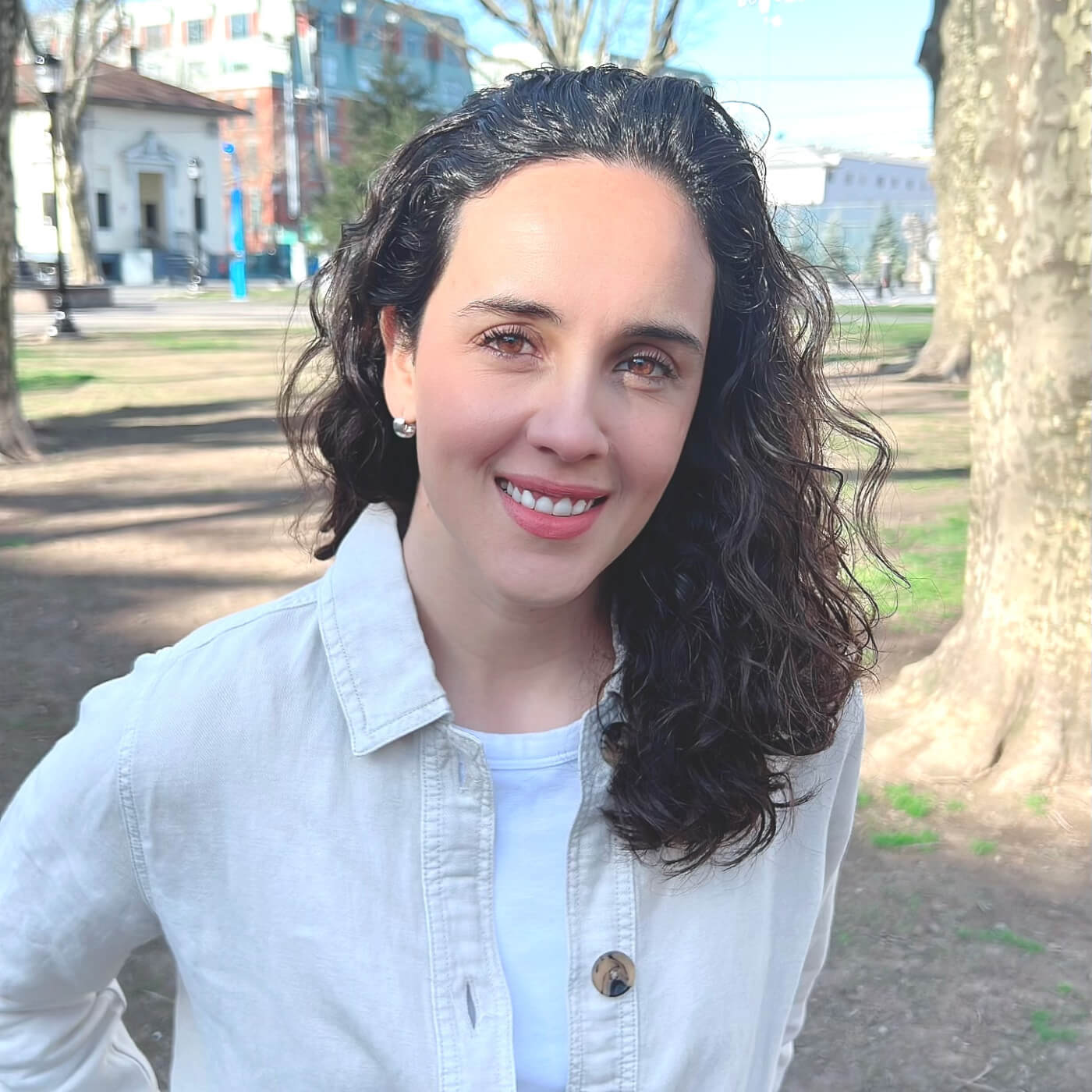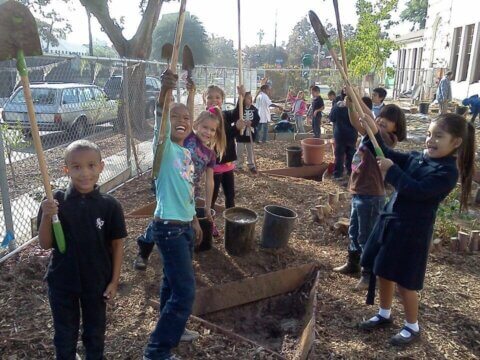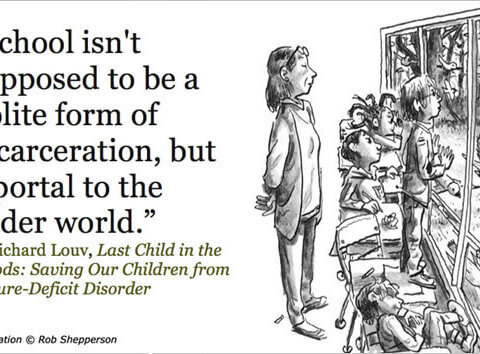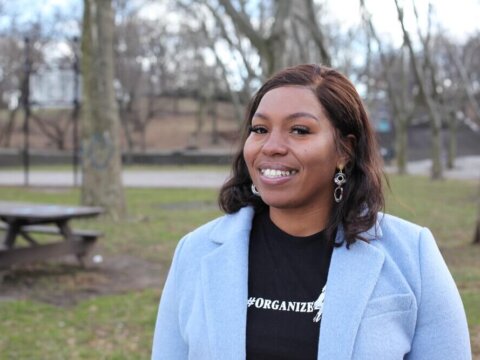Parents as changemakers: How community involvement shapes a school district’s way forward
When my husband and I moved out of our New York City apartment and ventured across the Hudson River to a small town mostly known as Frank Sinatra’s birthplace, we didn’t know what we were in for. Like most people who arrive in Hoboken, we sought more space but gained so much more. With more than 55,000 people sharing a little over a square mile, Hoboken takes community living to a whole new level. In a world increasingly detached from human contact, in this small-town, face-to-face contact comes effortlessly. The ability to strike up spontaneous conversations and build relationships was particularly important when I became a parent.
When my first child entered public preschool, I struggled to get involved substantially. Meetings were held during my work hours, and honestly, I mistakenly thought that parent-teacher organizations (PTOs) were limited to organizing bake sales and collecting Boxtops. By the end of the school year, I realized that not only had I underestimated the work of PTOs, but I also learned that meaningful change often happens when parents are involved.
I was visiting my son’s classroom to read a story when I inadvertently stayed for snack time. The teacher gracefully set out small plastic cups and plates that were eventually thrown into a bin with other classroom waste. My son’s teacher wasn’t doing anything different than the other 15 pre-kindergarten classes. Perplexed, I asked her why she handed plastic cups if the students have their water bottles. “The children are not allowed to use their water bottles. It’s school policy,” she replied. There was a concern for juice being brought to school. For months I had packed my son’s water bottle, confident that he was using it. Anyone who’s ever wanted to have a say about a school program or policy knows that speaking up can stir up a hornet’s nest. But that’s not always the case. Sometimes a change is so undisputedly beneficial that all it needs is to be suggested. The following school year, children were encouraged to bring clear water bottles to school.
The positive outcome motivated me to join the PTO, where I thought perhaps, I would find support for helping the school reduce its environmental impact. Unlike your Hollywood stereotypes, I encountered good-natured, generous, and creative individuals who were genuinely there to build a stronger school community. I met Emily Jabbour, a Hoboken council member and mother of two young girls, in my first meeting. She was often (and deservingly so) praised by other local parents for her work around the community. “While it always makes for a juggle to find the time away from work to be present in a school community during the day, it sets an important example of civic engagement for a child from an early age,” said Emily when I asked her why she chooses to volunteer. “The opportunity to be an active member of a school community is also a great way to better understand the culture of a space where your children spend most of their time – and often aren’t able to necessarily articulate what that experience is like, especially when they are young,” she added.
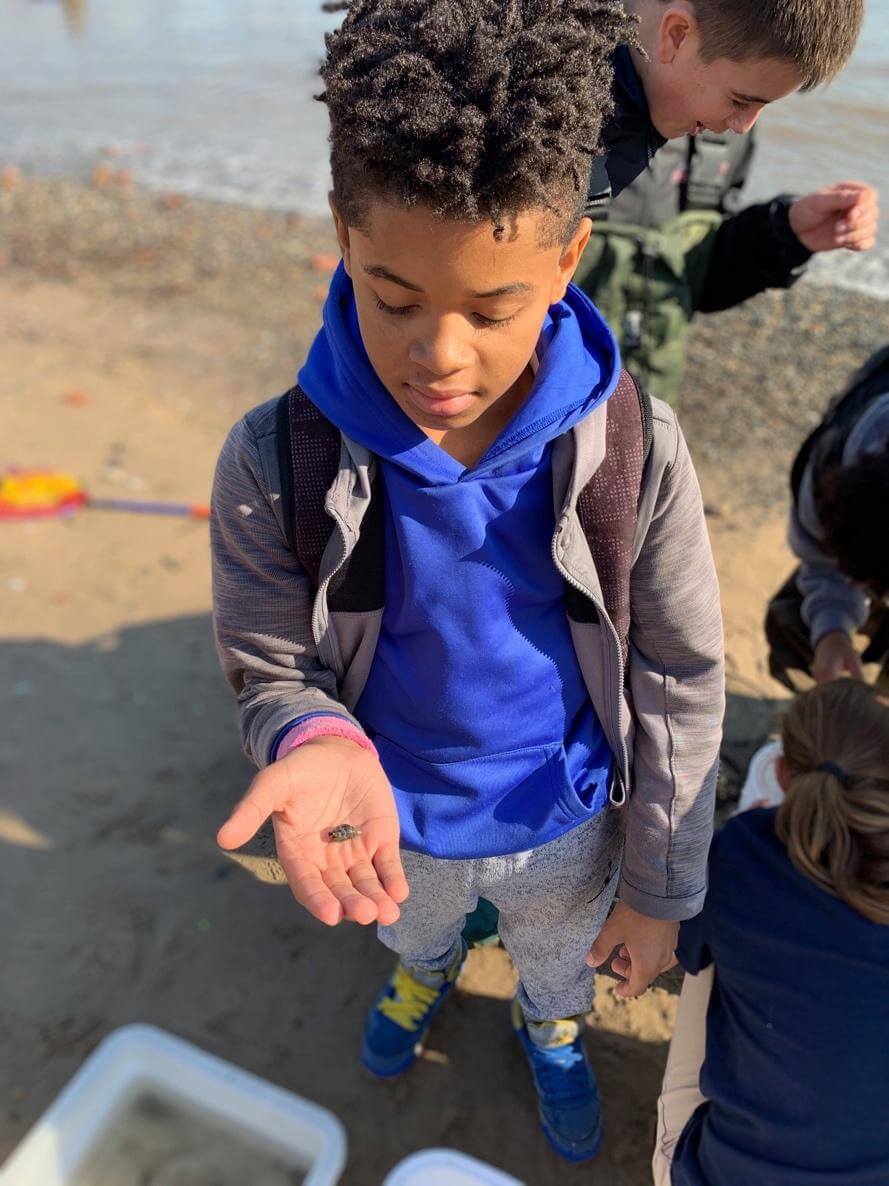
Photo courtesy of Hoboken Public Schools
Emily and I shared concern for the school district’s environmental impact and agreed that green initiatives needed to be brought to the table. I later met Amy Duskin and Katherine Harris, two Hoboken moms equally worried about how environmentally friendly efforts were falling through the cracks. Amy is a professional makeup artist and a longstanding advocate of clean and safe beauty products. Katherine is a registered nutritionist/dietitian longing to raise awareness of healthy food habits in our schools.
The three of us talked regularly for a few months and came up with a strategic plan– we would start small and work our way to more ambitious goals. We aimed to bring composting to school grounds, help green the outdoor spaces where our children play, and build a school garden that teachers could use as an outdoor classroom. We knew that if any of these ideas were to materialize, we needed to muster support from the inside, outside and in-between. The city’s department of environmental services operates a city-wide “Green Team”, that encourages concerned citizens to become active members of their community. Amy and I joined their monthly meetings.
“Sustainability is a community-driven movement for collective impact. From government to community leaders to parents, we are all working together to leave the world a better place for future generations. Parents and community organizations are vital to bringing environmental stewardship to schools, both inside and outside of the classroom,” says Jennifer Gonzalez, Director of Environmental Services for the City of Hoboken.
Effecting change from the outside can be strenuous if you are unfamiliar or new to the system, as the three of us were. Public schools communicate through a rigorous chain of command, and implementing programs such as composting requires education, health, and environmental sectors to be involved. But by early 2020, we held our first exploratory meeting with parents, teachers, and school staff–all of whom showed interest in being part of a School Green Team through an online survey.
While it is true that change most often requires funding, you don’t have to reinvent the wheel to find support. Many local businesses are often overlooked as sources for support. One of the goals of the Hoboken Public Education Foundation (HPEF) is to encourage the involvement of parents, community members, and local businesses in the enhancement of public education. I joined HPEF as a volunteer and learned that local businesses were just as interested in a thriving school community as were parents.
HPEF has funded important environmental education initiatives such as Hoboken Middle School’s new Living Classroom Wet Lab. The lab offers an opportunity for hands-on learning for students in the environmental stewards junior PGP class. “The students visited the Hudson River, under the district’s newly acquired NJ DEP license, to search for aquatic species. Students will not only take the driver’s seat in acquiring aquatic and plant life for the Living Classroom Wet Lab, they will also maintain the lab and conduct all research that will be submitted to professional and educational organizations,” said superintendent Dr. Christine Johnson in a school newsletter.
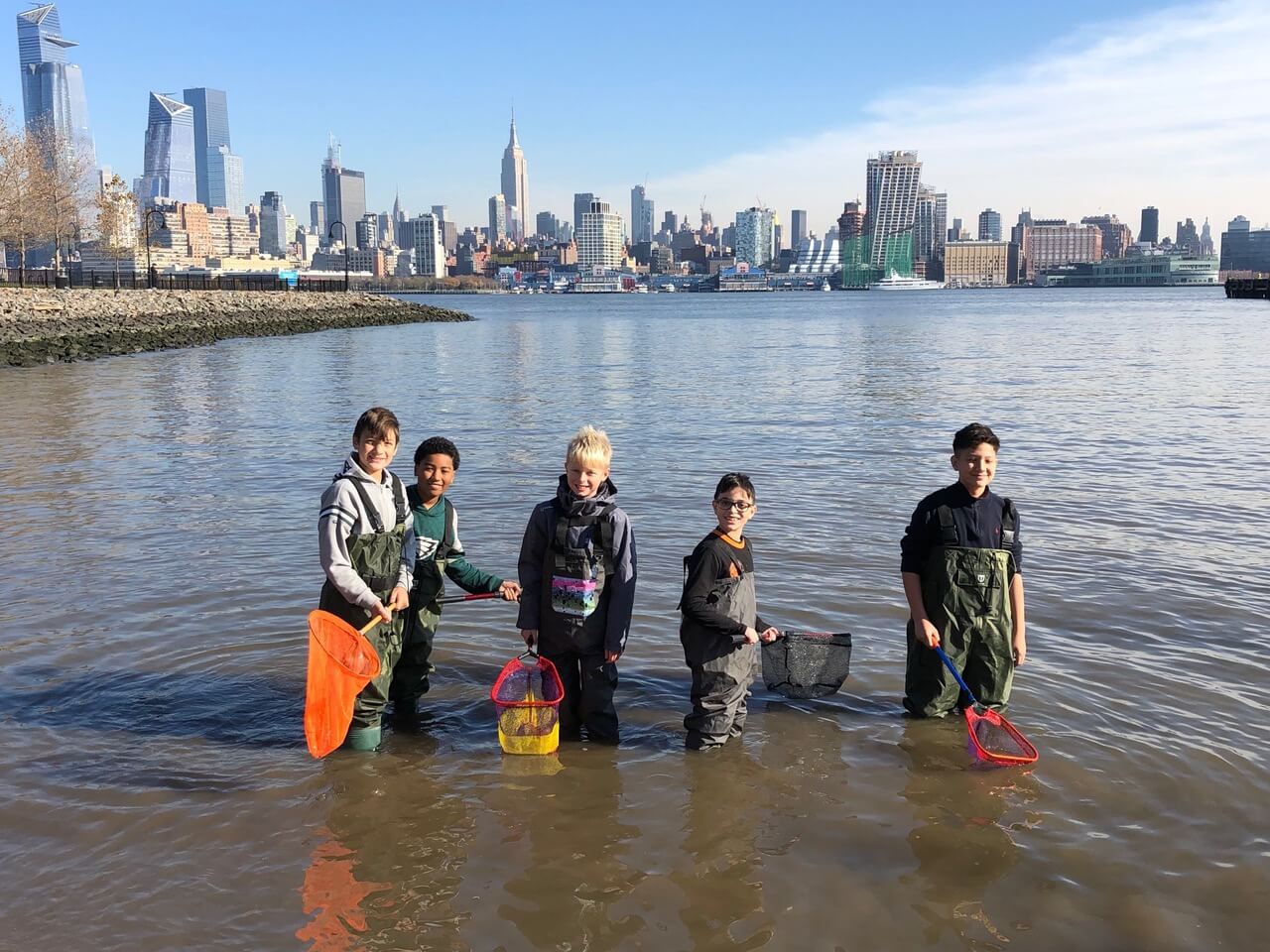
Photo courtesy of Hoboken Public Schools
The foundation also funded smaller-scale initiatives like field trips to local farms and nature centers and the Storm Drain mural project. These attention-grabbing pieces of artwork aim to raise awareness of the harmful effects of litter, gasoline, oil, grass clippings, road salt, and other types of pollution entering the Hudson River.
We all learned in this journey that schools mirror the principles and attitudes of the people in their districts. Finding the support of like-minded individuals and building a rational argument were crucial milestones. “I found it extremely inspiring to meet so many other parents who shared the same core values as mine. The parents I met along the way were professionals in the field of environmental science, certified lactation consultants, registered dietitian nutritionists, environmental activists, nurse practitioners, physicians, attorneys, educators and other concerned parents who understand how important access to nature is to child development as well as the mental health of all age groups,” says Katherine when reflecting back.

Students visiting Duke Farms in New Jersey,Photo courtesy of Hoboken Public Schools
There is no written formula on how parents and the community can influence school policy or programs. There is enormous variation among school systems across the United States. What’s suitable for a small charter school may not be ideal for a large public high school. Public schools are sometimes subject to more state rules and regulations than private schools.
Just a few weeks after our kickoff, the COVID-19 pandemic brought new challenges, forcing parents and districts to prioritize students and staff’s safety. Large gatherings and fundraising events were postponed. Parents became teachers and the world retreated from taking bold steps until deemed safer. On the bright side, the conversation of creating opportunities to engage students outdoors grew more relevant than ever and some school districts made accommodations for outdoor learning. While it may take some time to have a semblance of normalcy, there’s no need to wait to make a difference. “You can begin at home and learn to go green together as a family. Make it fun and share it with other friends and family so the movement spreads socially in your community. If living a greener life is a value to you and your family don’t wait for programs to be put in place before you start. Do whatever you can and then it may be easier for the ripple effect to happen in the broader community,” advises Katherine.
I am optimistic that once parents are relieved from the overwhelming pressures COVID-19 has dumped on them, the commitment and dedication to enhance places where children can thrive will come flourishing in, just like it did when the water receded from the streets of Hoboken after Hurricane Sandy.
Green Schoolyards Advocacy Toolkit
The Equigenic Effect: How Nature Access Can Level the Playing Field for Children, by Cathy Jordan
Research Digest: The Benefits of Nature-Based Education
Back to the School of the Future: The Real Cutting Edge of Education Probably Isn’t What You Think It Is, by Richard Louv
School of Nature: 8 Ways to Jumpstart a Great School Year with a Dose of Vitamin N, by Richard Louv
It Takes a Village, by Sarah Candelaria
-
Network News
Earth Day: Young leaders advocate for change
-
Feature
Nature photographer Dudley Edmondson has a vision for the representation of Black and Brown faces in the outdoors
-
Richard Louv
EARTH MONTH: You're part of the New Nature Movement if....
-
Voices
Placemaking: How to build kinship and inclusive park spaces for children with disabilities
-
Network News
Children & Nature Network founders release report on global factors influencing the children and nature movement



